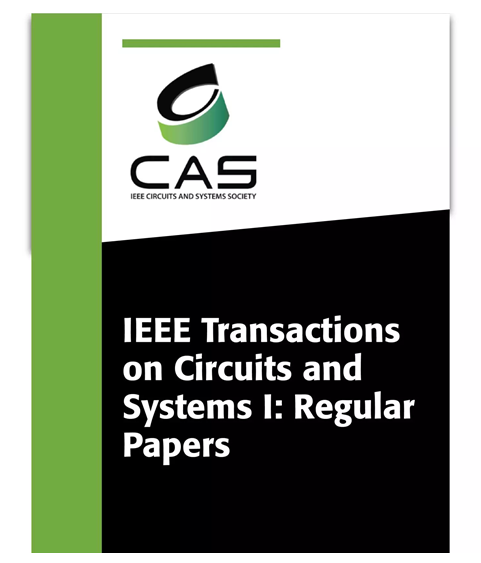An Investigation on the Three-Dimensional Memristive Morris–Lecar Model With Magnetic Induction Effects: Simulation of Biological Behaviors and Cost-Effective Digital Circuit Implementation
IF 5.2
1区 工程技术
Q1 ENGINEERING, ELECTRICAL & ELECTRONIC
IEEE Transactions on Circuits and Systems I: Regular Papers
Pub Date : 2025-02-05
DOI:10.1109/TCSI.2025.3534329
引用次数: 0
Abstract
The use of FPGA technology is becoming more popular for integrating neuromorphic computing systems because of the parallel processing capabilities and flexibility it offers. This study investigates the implementation of the 3D-Morris Lecar neuronal system, known as Digital Optimized Morris Lecar (DOML), in circuits to characterize the magnetic induction flow induced by neuron membrane potential. By employing a combination of trigonometric functions, hyperbolic functions, power-2 based terms, and LUT-based modules, a high-performance circuit is achieved through the best approximation methods. The model’s effectiveness is verified through validation techniques and error analysis, demonstrating a low-error mechanism due to the approximation of nonlinear functions and the avoidance of multipliers, dividers, and high-cost terms. By utilizing the proposed DOML method in digital synthesized circuits, a potential reduction of up to 37% in FPGA hardware resource cost and a potential speed increase of up to 5 times are achievable. The models were digitally synthesized using the Xilinx FPGA Virtex-4 board for cost-frequency validation, showing that the proposed model outperforms the original ML3D model while preserving its essential characteristics. The novelty of this approach lies in applying the combined approximation methods to create a cost-effective circuit suitable for biological systems, offering high speed and low cost attributes. Then, this basic circuit is applied in a sample Network of DOMLs (as a case study) to simulate and realize the population approach in simple form. This research’s findings can have practical implications for the development of neuromorphic hardware in medical devices, particularly in brain-computer interfaces and neuroprosthetics, where high-performance, low-cost hardware is crucial. In large-scale networks, our proposed modeling can be applied which is investigated in case of DOML connections.具有磁感应效应的三维记忆morrism - lecar模型研究:生物行为模拟与低成本数字电路实现
由于FPGA技术提供的并行处理能力和灵活性,它在集成神经形态计算系统中变得越来越流行。本研究探讨了3D-Morris Lecar神经元系统(称为数字优化Morris Lecar (DOML))在电路中的实现,以表征神经元膜电位诱导的磁感应流。通过结合三角函数、双曲函数、基于幂2的项和基于lut的模块,通过最佳逼近方法实现了高性能电路。通过验证技术和误差分析验证了模型的有效性,展示了由于非线性函数的近似和避免乘数、除数和高成本项而产生的低误差机制。通过在数字合成电路中使用所提出的DOML方法,FPGA硬件资源成本可能降低37%,速度可能提高5倍。利用Xilinx FPGA Virtex-4板对模型进行了数字合成,并进行了成本-频率验证,结果表明所提出的模型在保留原始ML3D模型基本特征的同时优于原始ML3D模型。该方法的新颖之处在于应用组合近似方法来创建适合生物系统的成本效益电路,具有高速和低成本的特性。然后,将该基本电路应用于一个dom网络样本(作为案例研究)中,以简单形式模拟和实现了人口方法。这项研究的发现对医疗设备中神经形态硬件的发展具有实际意义,特别是在脑机接口和神经假肢中,高性能、低成本的硬件是至关重要的。在大规模网络中,我们提出的模型可以应用于DOML连接的情况。
本文章由计算机程序翻译,如有差异,请以英文原文为准。
求助全文
约1分钟内获得全文
求助全文
来源期刊
CiteScore
9.80
自引率
11.80%
发文量
441
审稿时长
2 months
期刊介绍:
TCAS I publishes regular papers in the field specified by the theory, analysis, design, and practical implementations of circuits, and the application of circuit techniques to systems and to signal processing. Included is the whole spectrum from basic scientific theory to industrial applications. The field of interest covered includes: - Circuits: Analog, Digital and Mixed Signal Circuits and Systems - Nonlinear Circuits and Systems, Integrated Sensors, MEMS and Systems on Chip, Nanoscale Circuits and Systems, Optoelectronic - Circuits and Systems, Power Electronics and Systems - Software for Analog-and-Logic Circuits and Systems - Control aspects of Circuits and Systems.

 求助内容:
求助内容: 应助结果提醒方式:
应助结果提醒方式:


